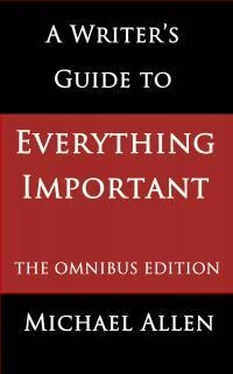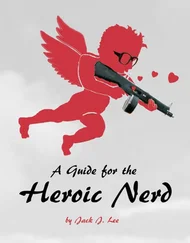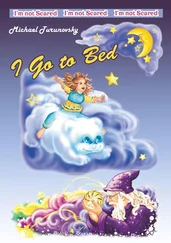A similar story was told at Jonathan Cape. ‘We get dozens of typescripts in an average week. More or less all of them are rejected.’
At Chatto and Windus the Times reporter was told that about 10 manuscripts arrived every day. Were they all read? Long pause. ‘Yes.’ Were any ever taken on? Long pause. ‘No.’
At Faber, no less than 15,000 manuscripts a year were being dumped on the doormat. But those fine fellows (and ladies) at Faber apparently sweated through the whole 15,000 in search of the unknown genius. It was reported by The Times that six people at Faber used to meet every Tuesday afternoon to discuss about 100 of the offerings. ‘Most of it is just terrible,’ said the fiction editor, ‘but at the moment I have got an unknown writer doing the third rewrite of a novel. If it comes out right, I feel we just might publish it.’
(Note to potential novelists: In my humble opinion, no one in her right mind does even one rewrite at a publisher’s request without a contract and some money.)
The largest publisher of romantic novels in the UK is Mills & Boon, or Harlequin Mills & Boon, to give the firm its full name. A few years ago the Mills & Boon editorial director stated that the firm receives 6,000 manuscripts a year from hopeful and so-far-unpublished writers. Out of these submissions, the company takes on, in a good year, about 10 new writers. Those who are taken on tend to do quite well financially (or that’s the publisher’s story, anyway); though they do not, of course, get short-listed for prestigious literary awards such as the Booker prize.
These figures, revealing masses of submissions and very few acceptances, could be replicated in any western country. In 1995, the owner of two small publishing firms in the USA reported in Publishers Weekly that he had received nearly 7,000 offers of books in the previous twelve months, and had decided to accept 12 of these submissions.
A much larger and more prestigious American firm, Viking, agreed to publish only one unsolicited manuscript in 26 years; that was Ordinary People , by Judith Guest. The book went on to become a bestseller as well as the basis for a successful film.
I rest my case. Your manuscript might well be a red-hot commercial property, or a wonderfully sensitive and brilliantly original literary novel with Pulitzer Prize written all over it – but the chances of the book being recognised as such are close to nil.
There are two reasons for that. The first is that your masterpiece will be surrounded by so much unsatisfactory material that it can easily be missed, even by an experienced judge.
And the second reason is that, by and large, publishers do not employ experienced judges for reading the slush pile. Never did do, and are much less likely to do so now, because they can’t afford it.
Traditionally, the job of slush-pile reader was allocated to the youngest and most junior member of the firm – the one who was in no position to say no. And even they soon learnt that, in order to stay sane, you had to reach a decision quickly and move on to the next one.
If an author is very lucky, the product of her many hundreds of hours of labour might be read by somebody with a little more experience and judgement than the newest member of staff. (But don’t rely on it.) Hear what one publishing professional, Andrew Taylor, had to say about the task, writing in The Bookseller in 1996: ‘In an average day’s work at a publisher’s office, I aim to assess 7 to 10 submissions and write reports on each of them which vary in length from 2 to 500 words.’
Mr Taylor is more generous with his time than some publishers’ readers. Giles Gordon once stated that when he was the slush-pile reader at Gollancz, he learnt how to tell whether a manuscript was any good within 15 seconds. ‘It’s just a matter of practice,’ he said airily.
Literary agent Pat Kavanagh held much the same view. ‘Two pages will tell you if a book from the slush pile is worth pursuing.’ And when was the last time she found a book in the slush pile that was worth pursuing? ‘Never. I don’t believe it has ever happened to me at all.’
Barry Turner, in The Writer’s Handbook , once mentioned an agent who fared a little better than that, but not much. In 14 years of reading 25-30 manuscripts a month, the agent found 5 good ones. Another agent, at Curtis Brown, personally received 1,200 manuscripts in one year, and took on two of the authors as clients.
2.5 Enter the literary agent
Aha! You will note that, at the end of the previous section, there was reference to a couple of literary agents. And who, pray, are they?
I have written a whole book about literary agents, so if you want a detailed account that’s the place to go: A Writer’s Guide to Literary Agents by yours truly, Michael Allen.
For the moment, however, let us note a few facts.
A literary agent is someone who acts on behalf of a writer in submitting a book to suitable publishers, and in negotiating the details of the contract if the publisher wants to buy. The idea is, the agent lives in London or New York, regularly has lunch with big-time publishers’ editors, knows what they are looking for, and can see which book will fit into which slot with a minimum of trouble. The agent, nowadays, take 15% of a writer’s money by way of recompense.
Despite all the gloomy news about the slush pile in the section above, it was always possible to sell a book without benefit of an agent, and still is. I did it myself, several times.
In a 2013 blog post, Laura Resnick pointed out that she had been making her living as a full-time novelist for 25 years. She had sold 30 books in her career, mostly to major houses. And of those, she made all but 7 of the sales herself.
However, submitting your own books is a tricky process, not made any easier by the fact that in recent years most major publishers have given up reading unsolicited submissions from anyone except a recognised agent.
What this means, and has meant for a few decades now, is that your best chance of getting published by a traditional publisher is to get yourself taken on by a well known agent.
And I incline to the view, often heard, that it is in fact harder to get a good agent than it is to get a publisher. In fact some agents are so damn snobby and picky that they won’t consider unsolicited manuscripts either! Consider Andrew Wylie, an agent so warm-hearted and friendly that he is universally known as The Jackal. His corporate web site, under the heading Submissions, says simply: ‘The Wylie Agency does not currently accept unsolicited submissions.’
Yes, Wylie is a charming fellow all round. But if you win a major literary prize you can expect to hear from him. Poaching clients from other agencies is his forte.
If publication in traditional hardback form is what you yearn for, so that your Granny can hold an actual book of yours in her crippled old hands, then your best plan, for a good few years, has been to interest a good agent first.
2.6 Success – of a sort
It is not unknown for writers to labour for years before even a chink of light disturbs the gloom of continual rejection by agents and publishers.
If you want an example, here’s one: between 1987 and 1993, R.J. Ellory wrote 22 novels. Without success; he collected several hundred rejection slips. He then gave up writing until 2001, when he wrote three novels in five months. The second of these proved to be his ‘breakthrough book’, and he now has a number of books in print.
So, by ‘keeping going’, R.J. Ellory made it. However, I worry about this idea that persistence pays. I really do. The snag, you see, is this. It is true that some writers succeed after years of rejection. But how many writers are there who don’t succeed after years of rejection? (In statistics, confusing these two kinds of data is known as the error of the transposed conditional.) You could go on writing two good novels a year until you die of exhaustion, aged 103, and still not get into print. That’s the problem. And what you have to ask yourself is this: Is a business in which randomness plays such a large part a business which an intelligent clear-thinking person (such as yourself) should get involved in?
Читать дальше












